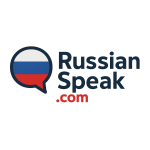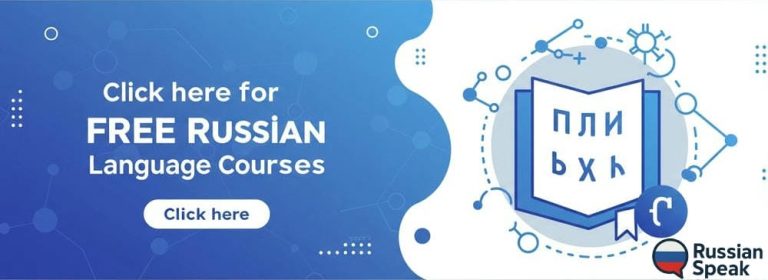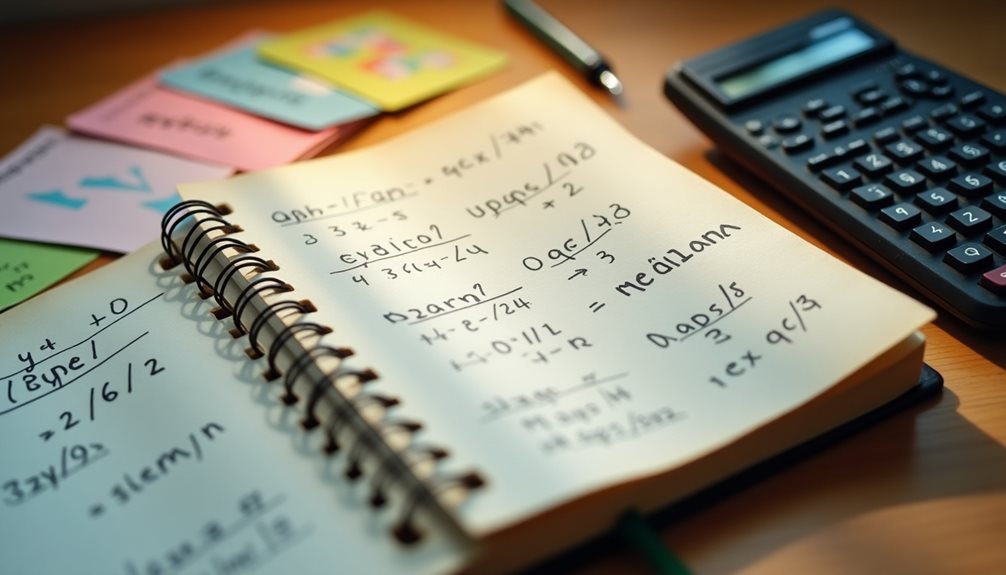Table of Contents
ToggleBasic Arithmetic Terms – Основные арифметические термины

Basic arithmetic forms the foundation of mathematical understanding, encompassing essential concepts that are universally recognized. Two primary operations in this domain are addition operations and subtraction techniques.
Addition involves combining quantities to achieve a total, while subtraction refers to the process of determining the difference between numbers. Mastery of these basic terms is vital for anyone seeking to enhance their mathematical skills. The symbols “+” and “-” represent these operations, respectively, serving as the means to communicate mathematical ideas succinctly.
Additionally, an understanding of these concepts empowers individuals, fostering confidence in their ability to navigate various numerical challenges. By grasping these fundamental terms, learners can build a robust framework for further mathematical exploration, ultimately gaining the freedom to engage with more complex topics.
Russian terms for basic arithmetic
| Russian (Cyrillic) | English Phonetic | English Definition |
|---|---|---|
| сложение | slo-ZHEH-nyeh | addition |
| вычитание | vy-chee-TAH-nyeh | subtraction |
| плюс | ploos | plus (+) |
| минус | MEE-noos | minus (-) |
| число | CHEES-loh | number |
| сумма | SOOM-mah | sum (result of addition) |
| разница | RAHZ-neetsah | difference (result of subtraction) |
| операция | oh-pye-RAH-tsi-ya | operation |
| равно | RAHV-noh | equals (=) |
| больше | BOL-sheh | greater than (>) |
| меньше | MLYEN-sheh | less than (<) |
![]()
These basic terms form the foundation for understanding and talking about addition and subtraction in Russian. If you want, I can provide example sentences for each term!
Algebraic Concepts
Algebra serves as a pivotal branch of mathematics, introducing variables and symbols to represent numbers in equations and expressions.
Central to algebra are algebraic expressions, which combine constants, variables, and operations to formulate mathematical relationships. These expressions can be simplified, manipulated, and evaluated, providing a foundation for solving problems.
Polynomial equations, a key component of algebra, are specific types of algebraic expressions characterized by their degree and coefficients. They can be linear, quadratic, or higher-order, each having distinct properties and methods for solving.
Understanding these concepts allows individuals to explore more complex mathematical ideas and apply them in various fields, promoting analytical thinking and problem-solving skills.
Mastery of algebraic concepts is essential for advancing in mathematics.
Russian terms for “Algebraic Concepts”
| Russian (Cyrillic) | English Phonetic | English Definition |
|---|---|---|
| Алгебра | Al-geh-bra | Algebra |
| Переменная | Peh-reh-MEH-nah-ya | Variable (a symbol representing a number) |
| Число | CHEES-lo | Number |
| Выражение | VY-razh-ye-nee-ye | Expression (algebraic expression) |
| Константа | Kon-STAN-ta | Constant (fixed number) |
| Операция | O-peh-RA-tsi-ya | Operation (such as addition, subtraction) |
| Уравнение | U-rahv-NEH-nye | Equation |
| Многочлен | Mnoh-gohch-LEN | Polynomial |
| Коэффициент | Ko-ehf-fi-TSI-ent | Coefficient (multiplier of variables) |
| Степень | STYE-pyen | Degree (the highest power of variable) |
| Линейное уравнение | Lee-NYE-no-ye U-rahv-NEH-nye | Linear equation |
| Квадратное уравнение | Kvah-DRAHT-no-ye U-rahv-NEH-nye | Quadratic equation |
| Решать | Reh-SHAHT | To solve |
| Аналитическое мышление | Ah-na-LEE-ti-ches-ko-ye MYSH-le-nye | Analytical thinking |
| Математика | Ma-teh-MA-teeka | Mathematics |
![]()
Geometry Vocabulary
Geometry encompasses a diverse range of terms and concepts essential for understanding the properties and relationships of shapes and spaces. This field introduces various geometric shapes, each with unique characteristics and classifications. One critical aspect is the classification of angles, which helps in comprehending their roles in different geometric configurations.
Geometry (геометрия, geometriya) is a branch of mathematics that studies shapes, sizes, and properties of figures and spaces. When learning Russian, it’s useful to know the key geometric terms in both languages to understand lessons, communicate ideas clearly, and recognize these words in texts or conversations.
Basic Geometric Shapes / Основные геометрические фигуры
| English Shape | Russian (Cyrillic) | Pronunciation (Phonetic) | English Definition |
|---|---|---|---|
| Triangle | треугольник | tri-oo-GOL-nik | A polygon with three sides |
| Quadrilateral | четырёхугольник | che-ty-ryokh-oo-GOL-nik | A polygon with four sides |
| Circle | круг | kroog | A round shape with no corners |
| Hexagon | шестиугольник | shes-ti-oo-GOL-nik | A polygon with six sides |
| Octagon | восьмиугольник | vos-mi-oo-GOL-nik | A polygon with eight sides |
![]()
Classification of Angles / Классификация углов
Understanding types of angles is important for describing geometric figures. Here are common types:
| English Angle | Russian (Cyrillic) | Pronunciation (Phonetic) | English Definition |
|---|---|---|---|
| Acute angle | острый угол | O-stry oo-GOL | An angle less than 90 degrees |
| Right angle | прямой угол | pree-MOY oo-GOL | An angle exactly 90 degrees |
| Obtuse angle | тупой угол | too-POY oo-GOL | An angle greater than 90 but less than 180 |
| Straight angle | развернутый угол | ra-zver-NOO-ty oo-GOL | An angle exactly 180 degrees |
Example Sentences / Примеры предложений
- English: A triangle has three sides.
Russian: Треугольник имеет три стороны.
Phonetic: Tri-oo-GOL-nik ee-MEE-yet tree sto-RO-ny. - English: The right angle is 90 degrees.
Russian: Прямой угол равен 90 градусам.
Phonetic: Pree-MOY oo-GOL RA-ven de-vyaht-DEST gra-DOO-sam. - English: A circle has no corners.
Russian: Круг не имеет углов.
Phonetic: Kroog nye ee-MEE-yet oo-GLOV.
Additional Useful Vocabulary
| English Term | Russian (Cyrillic) | Pronunciation (Phonetic) | English Definition |
|---|---|---|---|
| Polygon | многоугольник | mno-go-oo-GOL-nik | A shape with many sides |
| Side (of a shape) | сторона | sto-RO-na | One edge of a polygon |
| Vertex (corner) | вершина | ver-SHEE-na | A point where two sides meet |
| Angle | угол | oo-GOL | The space between two intersecting lines |
![]()
This list and examples give you a solid start to discussing geometry concepts in Russian. Practice pronouncing these words aloud and try making your own sentences to get comfortable with the terms. If you want, I can also provide exercises or flashcards to help memorize them! Mastering this vocabulary enables individuals to explore geometry’s complexities and appreciate its application in real-world contexts, fostering creativity and analytical thinking.
Trigonometry Terminology – Тригонометрическая терминология
Trigonometry serves as a fundamental branch of mathematics that focuses on the relationships between the angles and sides of triangles. This discipline is essential for understanding various trigonometric functions such as sine, cosine, and tangent, which relate angle measurement to side lengths in right triangles.
Each trigonometric function provides unique insights into the properties of triangles, facilitating calculations in fields like physics, engineering, and architecture. The concepts of angle measurement, whether in degrees or radians, are critical for applying these functions effectively.
As learners explore trigonometry terminology, they gain the freedom to analyze and solve complex problems, enhancing their mathematical skill set. Mastery of this vocabulary reveals deeper comprehension and application of trigonometric principles in diverse contexts.
Trigonometry is a branch of mathematics that deals with the relationships between the angles and sides of triangles. In Russian, this field is called тригонометрия (tri-go-no-ME-tri-ya). Understanding the key terms in Russian will help English speakers learn the language more effectively, especially in math or science contexts.
Basic Concepts in Trigonometry (Основные понятия тригонометрии)
- Triangle — треугольник (treh-oo-GOL-nik)
A three-sided polygon. Triangles are the main shape studied in trigonometry.
- Angle — угол (OO-gol)
The figure formed by two rays meeting at a common endpoint. Angles are measured in degrees or radians.
- Side — сторона (sto-RO-na)
The edges of the triangle.
- Right Triangle — прямоугольный треугольник (preem-oo-GOL-nyi treh-oo-GOL-nik)
A triangle with one 90-degree angle.
- Hypotenuse — гипотенуза (gee-pa-teh-NU-za)
The longest side opposite the right angle in a right triangle.
- Opposite Side — противолежащая сторона (pro-tee-va-le-ZHA-sha-ya sto-RO-na)
The side opposite to a given angle.
- Adjacent Side — прилегающая сторона (pree-lee-GA-yu-sha-ya sto-RO-na)
The side next to a given angle, but not the hypotenuse.
Trigonometric Functions (Тригонометрические функции)
In trigonometry, there are three main functions related to angles and sides in right triangles:
| Russian Word | Phonetic | English Definition |
|---|---|---|
| синус | SEE-nus | sine (ratio of opposite side to hypotenuse) |
| косинус | ko-SEE-nus | cosine (ratio of adjacent side to hypotenuse) |
| тангенс | TAN-gens | tangent (ratio of opposite side to adjacent side) |
Example:
If you have a right triangle and want to find the sine of angle θtheta, in Russian you would say:
“синус угла $theta$” — sine of angle θtheta.
Angle Measurement (Измерение углов)
Angles can be measured in two common units:
| Russian Word | Phonetic | English Definition |
|---|---|---|
| градус | GRA-doos | degree |
| радиан | RA-dee-an | radian |
![]()
Useful Russian Terms Related to Trigonometry
| Russian Term | Phonetic | English Definition |
|---|---|---|
| тригонометрия | tri-go-no-ME-tri-ya | trigonometry |
| функция | FOONK-tsi-ya | function |
| сторона | sto-RO-na | side |
| угол | OO-gol | angle |
| прямоугольный треугольник | preem-oo-GOL-nyi treh-oo-GOL-nik | right triangle |
| катет | KA-tet | leg (a side of a right triangle except hypotenuse) |
| гипотенуза | gee-pa-teh-NU-za | hypotenuse |
| противолежащая сторона | pro-tee-va-le-ZHA-sha-ya sto-RO-na | opposite side |
| прилегающая сторона | pree-lee-GA-yu-sha-ya sto-RO-na | adjacent side |
| синус угла | SEE-nus OO-gla | sine of an angle |
| косинус угла | ko-SEE-nus OO-gla | cosine of an angle |
| тангенс угла | TAN-gens OO-gla | tangent of an angle |
![]()
Knowing these terms helps English speakers learning Russian to understand and talk about trigonometry clearly. For example, when solving problems involving triangles, you can describe angles and sides using the correct Russian words, making your math discussions more accurate and natural.
Calculus Essentials — Основы математического анализа
Calculus represents a pivotal area of mathematics that explores the concepts of change and motion. It provides essential tools for understanding dynamic systems through limits concepts and derivative applications.
Limits are fundamental in defining derivatives, allowing mathematicians to analyze how functions behave as inputs approach specific values. This understanding leads to the calculation of rates of change, which is vital in various fields, from physics to economics.
Derivative applications extend these concepts further, enabling the optimization of functions and modeling of real-world scenarios. By mastering these calculus essentials, individuals can gain insights into complex problems, fostering a sense of freedom in their analytical capabilities.
Ultimately, calculus serves as a bridge to advanced mathematical techniques and scientific explorations.
Calculus (математический анализ) is a very important part of mathematics that helps us understand change and motion. In Russian, it’s called математический анализ (matematicheskiy analiz). This subject uses two main ideas:
- Limits (пределы, predely)
- Derivatives (производные, proizvodnye)
Both are key to studying how things change, which is useful in physics, economics, engineering, and many other fields.
Limits — Пределы
A limit describes what happens to a function when the input gets closer and closer to a certain value. In Russian, limit is предел (predel).
For example, the limit of the function f(x)=1xf(x) = frac{1}{x} as xx approaches infinity is 0. In Russian, you could say:
Предел функции f(x)=1xf(x) = frac{1}{x} при x→∞x to infty равен 0.
This means: “The limit of function f(x)=1xf(x) = frac{1}{x} as x→∞x to infty is 0.”
Derivatives — Производные
A derivative shows the rate at which a function changes. It tells us how fast something is moving or changing at any moment. In Russian, derivative is производная (proizvodnaya).
Example:
If y=x2y = x^2, then the derivative dydx=2xfrac{dy}{dx} = 2x.
In Russian:
Если y=x2y = x^2, тогда производная dydx=2xfrac{dy}{dx} = 2x.
Related Russian Terms for Calculus
| Cyrillic | English Phonetic | English Definition |
|---|---|---|
| математический анализ | matematicheskiy analiz | calculus |
| предел | predel | limit |
| производная | proizvodnaya | derivative |
| функция | funktsiya | function |
| переменная | peremennaya | variable |
| бесконечность | beskonechnost | infinity |
| непрерывность | nepreryvnost | continuity |
| скорость изменения | skorost izmeneniya | rate of change |
| оптимизация | optimizatsiya | optimization |
![]()
Summary
- Calculus in Russian is математический анализ.
- Limits and derivatives are called пределы and производные.
- The word for function is функция, which sounds like “funkt-see-ya.”
- To say “rate of change,” use скорость изменения (skorost izmeneniya).
Studying these terms will help you read and understand Russian math textbooks or lessons about calculus.
Probability and Statistics — Вероятность и Статистика

Probability and statistics form an essential foundation in the field of mathematics, focusing on the analysis and interpretation of data. These concepts enable individuals to understand and quantify uncertainty while making informed decisions.
Key elements include:
- Probability Distributions: Functions that describe how probabilities are distributed across different outcomes.
- Statistical Significance: A measure that indicates whether results are likely due to chance or represent true effects.
- Descriptive Statistics: Tools used to summarize and describe data characteristics, such as mean and variance.
- Inferential Statistics: Techniques that allow conclusions to be drawn about a population based on sample data.
When learning Russian, it’s helpful to know the Russian words related to probability and statistics, especially if you want to read or discuss this topic in Russian. Below, I will explain the key concepts in simple terms and give you useful Russian vocabulary with pronunciation and meanings. Understanding these principles empowers individuals to navigate complex data landscapes with confidence and clarity.
Основные понятия (Key Concepts)
1. Вероятность (Probability)
Вероятность — это возможность того, что событие произойдет. Например, вероятность выпадения орла при подбрасывании монеты — 50%.
- English phonetics: [vyer-o-yat-nost]
- Meaning: Probability, chance of an event happening.
2. Статистика (Statistics)
Статистика — это наука о сборе, анализе и интерпретации данных.
- English phonetics: [sta-tees-tee-ka]
- Meaning: Statistics, the science of data.
Основные элементы (Key Elements)
| Русское слово (Cyrillic) | English Phonetic | English Definition |
|---|---|---|
| Распределение вероятностей | raspredyelyeniye vyeroyatnostey | Probability distribution: function showing how probabilities are spread across possible outcomes. |
| Статистическая значимость | statisticheskaya znachimost | Statistical significance: measure to decide if results are due to chance or real effect. |
| Описательная статистика | opisatel’naya statistika | Descriptive statistics: methods to summarize data (mean, variance). |
| Инференциальная статистика | inferentsial’naya statistika | Inferential statistics: methods to make conclusions about populations from samples. |
| Среднее значение | sredneye znachenie | Mean, average value of data points. |
| Дисперсия | dispersiya | Variance, measure of how data are spread out. |
![]()
Примеры (Examples)
Example 1: Вероятность (Probability)
If you roll a six-sided die, the probability that the result is a 4 is:
P(4)=16P(4) = frac{1}{6}
In Russian, you can say:
- Вероятность выпадения четырёх при броске кубика равна одной шестой.
- [Vyeroyatnost vypadeniya chetyryokh pri broske kubika ravna odnoy shestoy.]
Example 2: Описательная статистика (Descriptive Statistics)
Suppose we have data: 2, 4, 6, 8, 10.
- Среднее значение (mean):
2+4+6+8+105=6frac{2 + 4 + 6 + 8 + 10}{5} = 6
- Дисперсия (variance) measures how much these numbers differ from the mean.
How to say “Probability and Statistics” in Russian
- Probability = Вероятность (vyeroyatnost)
- Statistics = Статистика (statistika)
Together:
Вероятность и статистика
Learning these terms will help you understand Russian texts or lectures on probability and statistics. If you want, I can provide exercises or example sentences for better practice!
Graphs and Charts — Графики и Диаграммы
Graphs and charts serve as essential tools in the visualization of data, allowing for easier interpretation and analysis. Among the most common types are line graphs and pie charts.
Line graphs effectively illustrate trends over time, showcasing how data points connect sequentially, making them ideal for displaying changes. Conversely, pie charts offer a clear representation of proportions within a whole, enabling viewers to quickly grasp the relative sizes of different categories.
Both visual aids simplify complex information, facilitating better decision-making. By employing these graphical representations, individuals can communicate data insights more effectively, fostering understanding and engagement.
Mastery of these tools enhances one’s ability to analyze and present information in a visually appealing manner, promoting clarity and comprehension.
When learning Russian, it is useful to know how to talk about graphs and charts because these are common in everyday conversations, business, science, and school. Let’s expand on the topic by explaining some important Russian vocabulary and phrases related to graphs and charts.
Key Points About Graphs and Charts in Russian
- Line graphs (линейные графики) are used to show how something changes over time.
- Pie charts (круговые диаграммы) show how parts make up a whole, usually as slices of a circle.
- Understanding these helps in talking about statistics, trends, and data analysis.
Useful Russian Vocabulary for Graphs and Charts
| Cyrillic | English Phonetic | English Definition |
|---|---|---|
| график | graf-ik | graph (general term for line graphs) |
| диаграмма | dee-a-gra-mma | diagram, chart |
| круговая диаграмма | kroo-go-va-ya dee-a-gra-mma | pie chart |
| линейный график | lee-néy-nyy graf-ik | line graph |
| ось | os’ | axis (like x-axis or y-axis) |
| данные | dan-nye | data |
| точка данных | toch-ka dan-nykh | data point |
| тенденция | ten-den-tsi-ya | trend |
| процент | pro-tsent | percent |
| часть | chast’ | part, portion |
| изменение | iz-me-nye-ni-ye | change |
| сравнение | sra-vne-ni-ye | comparison |
![]()
Example Sentences in Russian with English Explanation
- Этот график показывает тенденцию роста за последние пять лет.
E-toht graf-ik po-ka-zy-va-yet ten-den-tsiyu rosta za pos-lye-dni-ye pyat’ let.
This graph shows the growth trend over the last five years. - Круговая диаграмма отображает доли рынка каждого продукта.
Kroo-go-va-ya dee-a-gra-mma ot-bra-zha-yet do-li ryn-ka ka-zh-do-go pro-duk-ta.
The pie chart displays the market shares of each product. - На оси X отмечены годы, а на оси Y — продажи.
Na osi X ot-me-che-ny go-dy, a na osi Y — pro-da-zhi.
On the X-axis the years are marked, and on the Y-axis — sales.
How to Describe a Graph or Chart in Russian
When describing a graph or chart in Russian, you can use these useful phrases:
- График показывает… — The graph shows…
- Диаграмма иллюстрирует… — The chart illustrates…
- Можно увидеть тенденцию… — You can see the trend…
- Данные отображают… — The data represent…
- Процентное соотношение… — The percentage ratio…
- По сравнению с прошлым годом… — Compared to last year…
Summary
Knowing how to talk about graphs and charts in Russian helps you understand and explain data clearly. Using the vocabulary and phrases above, you can describe trends, parts of a whole, and comparisons effectively.
Mathematical Symbols and Notation — Математические символы и обозначения
Mathematical symbols and notation form the foundational language of mathematics, enabling precise communication of complex ideas. Understanding these symbols is vital for interpreting mathematical expressions and recognizing notation differences across various contexts.
- Operators: Symbols like + (addition) and – (subtraction) convey foundational operations.
- Relations: Symbols such as = (equals) and ≠ (not equal) express relationships between quantities.
- Functions: Notation like f(x) represents functions, significant for understanding mathematical behavior.
- Sets: Symbols like ∈ (element of) and ∅ (empty set) define collections of objects, essential in set theory.
Mathematics uses special symbols to talk about numbers, operations, and relationships in a clear and precise way. When learning Russian, understanding these symbols along with their Russian names helps you read math problems, textbooks, and instructions more easily. Familiarity with these symbols reveals the ability to navigate deeper mathematical concepts with confidence and clarity, empowering individuals to explore freely.
1. Basic Mathematical Operators — Основные математические операторы
These symbols tell us what kind of calculation to do.
| Symbol | Russian Word | English Phonetic | English Meaning |
|---|---|---|---|
| + | плюс | plus | addition (adding) |
| – | минус | meen-oos | subtraction (subtracting) |
| × or * | умножить | oom-nah-zheet | multiplication |
| ÷ or / | разделить | rahz-de-leet | division |
![]()
Example:
- 5+3=85 + 3 = 8
Пять плюс три равно восемь
(Pyat’ plus tree ravno vosem’)
Five plus three equals eight.
2. Relations — Отношения
These symbols show how two things relate to each other.
| Symbol | Russian Word | English Phonetic | English Meaning |
|---|---|---|---|
| = | равно | rahv-no | equals |
| ≠ | не равно | nye rahv-no | not equal |
| < | меньше | mlesh-she | less than |
| > | больше | bol-she | greater than |
| ≤ | меньше или равно | mlesh-she ee-lee rahv-no | less than or equal to |
| ≥ | больше или равно | bol-she ee-lee rahv-no | greater than or equal to |
![]() Example:
Example:
- 7≠57 neq 5
Семь не равно пять
(Syem nye rahv-no pyat’)
Seven is not equal to five.
3. Functions — Функции
Functions show how one number depends on another.
- In English: f(x)f(x)
- In Russian: f(x)f(x) (same notation, but pronounced as “функция икс” — funktsiya iks)
The letter ff stands for функция (function), and xx is the variable.
Example:
- f(x)=x+2f(x) = x + 2
Функция икс равна икс плюс два
(Funktsiya iks ravna iks plus dva)
Function x equals x plus two.
4. Sets — Множества
Sets are collections of objects or numbers.
| Symbol | Russian Word | English Phonetic | English Meaning |
|---|---|---|---|
| ∈ | принадлежит | prinadlezhit | element of / belongs to |
| ∉ | не принадлежит | nye prinadlezhit | not an element of |
| ∅ | пустое множество | pustoye mnozhestvo | empty set |
| ⊂ | подмножество | podmnozhestvo | subset |
| ∪ | объединение | ob’yedinenie | union |
| ∩ | пересечение | peresecheniye | intersection |
![]() Example:
Example:
- 3∈A3 in A
Три принадлежит множеству А
(Tri prinadlezhit mnozhestvu A)
Three belongs to set A.
Table of Important Russian Mathematical Terms
| English Term | Cyrillic | Phonetic |
|---|---|---|
| plus (addition) | плюс | plus |
| minus (subtraction) | минус | meen-oos |
| multiply | умножить | oom-nah-zheet |
| divide | разделить | rahz-de-leet |
| equals | равно | rahv-no |
| not equal | не равно | nye rahv-no |
| less than | меньше | mlesh-she |
| greater than | больше | bol-she |
| function | функция | funktsiya |
| element of | принадлежит | prinadlezhit |
| empty set | пустое множество | pustoye mnozhestvo |
| subset | подмножество | podmnozhestvo |
| union | объединение | ob’yedinenie |
| intersection | пересечение | peresecheniye |
![]()
Knowing these terms and symbols in Russian will help you understand math written in Russian much better.
Frequently Asked Questions
How Can I Practice Using Russian Math Vocabulary Effectively?
To practice effectively, one can utilize flashcards for vocabulary recall and engage in interactive games that reinforce learning. This approach fosters a dynamic environment, encouraging retention and application of new terms in a fun way.
Are There Online Resources for Learning Math Terms in Russian?
Many online resources exist for learning math terms in Russian, including extensive online courses and language apps. These platforms facilitate effective vocabulary acquisition, allowing learners to practice and enhance their understanding of essential mathematical terminology.
What Are Some Common Mistakes When Learning Math Vocabulary?
Common mistakes when learning math vocabulary include misunderstanding terms due to direct translations and failing to grasp contextual meanings. Translating phrases without considering their usage can lead to confusion and hinder effective communication in mathematical discussions.
How Can I Improve My Pronunciation of Russian Math Terms?
To improve pronunciation, individuals can engage in phonetic exercises focusing on Russian sounds. Incorporating accent reduction techniques enhances clarity, allowing for more effective communication. Consistent practice fosters confidence and mastery of mathematical terminology in Russian.
Is There a Difference Between Formal and Informal Math Terms in Russian?
The difference between formal terminology and everyday usage in Russian math terms lies in context. Formal terms are used in academic settings, while informal terms may be employed in casual conversations, affecting clarity and understanding.



